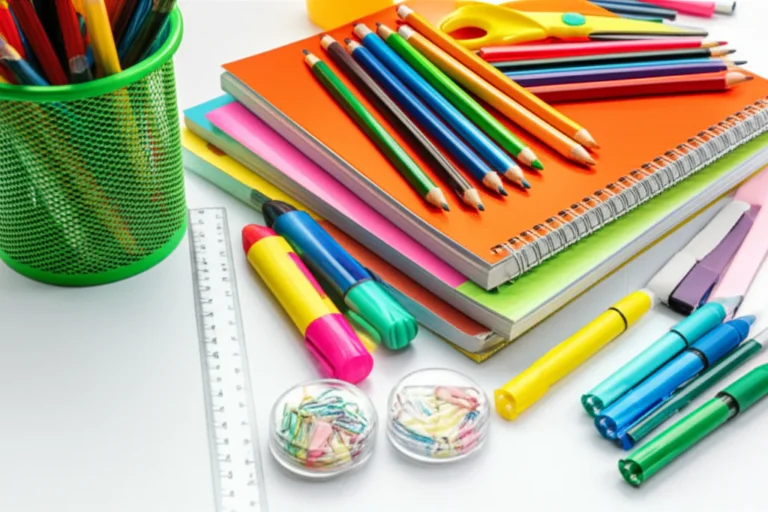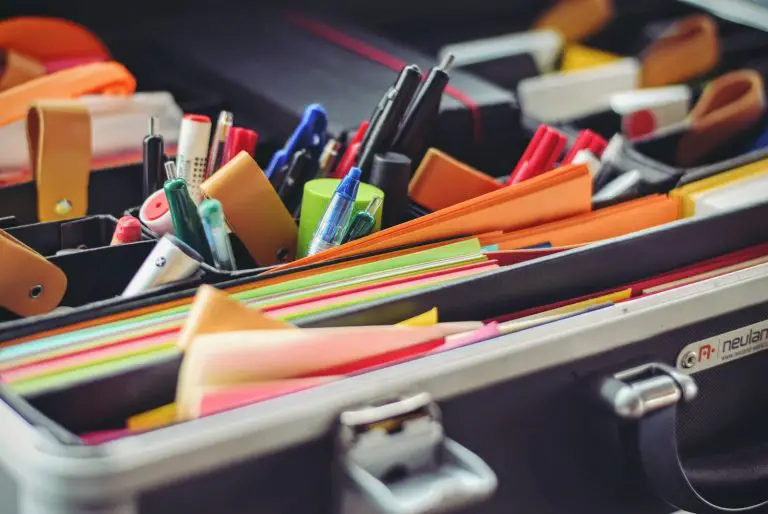Support our educational content for free when you purchase through links on our site. Learn more
The True Cost of Teaching: 12 Shocking Facts About Average Teacher Spending (2025) 💸
Picture this: Ms. Thompson, a passionate 3rd-grade teacher, just finished her monthly shopping trip—not for herself, but for her classroom. She loaded up on crayons, notebooks, snacks, and even hand sanitizer, spending nearly a thousand dollars out of her own pocket. Sound familiar? If you’re an educator or care about education, you might be shocked to learn that this is the reality for thousands of teachers across the country every year.
In this article, we pull back the curtain on the average teacher spending in 2025, revealing why educators are investing so much personally, what they’re buying, and how this affects classrooms and students. We’ll also share smart strategies to stretch your budget and spotlight resources that can ease the financial burden. Ready to discover the full story behind those classroom supply receipts? Let’s dive in!
Key Takeaways
- Teachers spend an average of $860 annually out of pocket on classroom supplies, a 44% increase since 2015.
- Spending covers essentials like paper and pencils, but also snacks, hygiene products, tech, and furniture to meet diverse student needs.
- This personal investment causes significant financial strain and emotional stress among educators.
- Tax deductions help but only cover a fraction of expenses; grants and community support are vital.
- Smart spending tips include buying in bulk, leveraging free resources, and collaborating with colleagues.
- Advocacy and increased school funding are crucial for sustainable change.
👉 Shop Trusted Classroom Essentials:
Table of Contents
- ⚡️ Quick Tips and Facts: The Startling Reality of Teacher Out-of-Pocket Spending
- 🕰️ The Unseen Investment: A History of Teacher Out-of-Pocket Spending
- 💸 The Shocking Reality: What is the Average Teacher Spending Out-of-Pocket Annually?
- 🤔 Why Do Educators Spend So Much? Unpacking the Root Causes of Classroom Expense
- 🛍️ What Exactly Are Teachers Buying? A Deep Dive into Classroom Essentials (and Beyond!)
- 💔 The Emotional Toll: More Than Just Money – The Impact on Teacher Well-being and Financial Strain
- 🍎 The Ripple Effect: How Teacher Spending Impacts Students, Learning Environments, and Educational Equity
- 🤝 Are There Any Solutions? How Schools, Districts, and Communities Can Support Teacher Financial Burden
- 💡 Smart Spending Strategies for Teachers: Making Every Dollar Count in Your Classroom Budget
- 🧾 The Taxing Truth: Can Teachers Deduct Classroom Expenses and Supplies?
- 📚 Beyond the Classroom: Teacher Spending on Professional Development, Training, and Personal Growth
- 🚀 The Future of Teacher Spending: Hopes for Change, Advocacy, and Sustainable Funding Solutions
- Conclusion
- Recommended Links
- FAQ
- Reference Links
⚡️ Quick Tips and Facts: The Startling Reality of Teacher Out-of-Pocket Spending
Let’s kick things off with some eye-opening facts that every educator and education advocate should know:
- Average Out-of-Pocket Spending: Teachers are shelling out around $820 to $860 annually on classroom supplies, according to recent surveys by NEA and AdoptAClassroom.org. That’s a 44% increase since 2015!
- Common Purchases: Paper, pencils, notebooks, dry erase markers, glue sticks, books, and even snacks and hand sanitizer.
- Budget Gaps: The median school supply budget is about $200, but teachers cover 60% of their classroom needs themselves.
- Tax Deduction: Teachers can deduct up to $300 of qualified expenses on their taxes — a small relief, but far from enough.
- Emotional Impact: Spending adds to teacher fatigue and financial strain, with some educators refinancing homes or taking second jobs to keep classrooms stocked.
We’ve seen firsthand at Teacher Supply Store™ how these realities shape the classroom experience. But why is this spending so high? Let’s dig deeper.
🕰️ The Unseen Investment: A History of Teacher Out-of-Pocket Spending
Teacher spending isn’t new — it’s a decades-long story of educators stepping up where budgets fall short.
- Pre-2010s: Spending was lower, averaging around $300-$400 annually.
- 2015: The average hit about $600, reflecting growing budget cuts and rising costs.
- 2020: The pandemic pushed spending to $745 as teachers bought tech and sanitation supplies.
- 2023: Now, the average is $860, with inflation and supply chain issues driving costs higher.
This trend reflects systemic underfunding in education. Teachers have become the unsung financial backbone of their classrooms, often sacrificing personal finances for student success.
💸 The Shocking Reality: What is the Average Teacher Spending Out-of-Pocket Annually?
Let’s break down the numbers:
| Year | Average Spending (USD) | % Increase Since 2015 |
|---|---|---|
| 2015 | $600 | — |
| 2020 | $745 | 24% |
| 2023 | $860 | 44% |
Why the jump? Inflation, shrinking school budgets, and higher expectations for classroom resources.
Teacher Voices:
“I spent over $1,000 last year just on basic supplies and books. It’s exhausting.” – Ms. Ramirez, 5th Grade Teacher
“Snacks and hygiene products are a big part of my spending because many students come to school hungry or without essentials.” – Mr. Johnson, Middle School
🤔 Why Do Educators Spend So Much? Unpacking the Root Causes of Classroom Expense
Teachers aren’t just buying supplies for fun — they’re filling gaps left by:
- Insufficient School Budgets: Most schools allocate less than $200 per classroom.
- High Student Needs: Poverty, homelessness, and hunger mean teachers buy snacks, clothing, and hygiene products.
- Technology Demands: Online learning and digital tools require subscriptions and devices.
- Creating a Positive Environment: Teachers invest in decor, furniture, and books to engage students.
The result? Teachers become unofficial fundraisers and supply managers — a role they didn’t sign up for but embrace out of love for their students.
🛍️ What Exactly Are Teachers Buying? A Deep Dive into Classroom Essentials (and Beyond!)
Here’s a typical teacher’s shopping list:
| Category | Common Items | Why It Matters |
|---|---|---|
| Basic Supplies | Paper, pencils, notebooks, glue sticks, markers | Essential for daily lessons |
| Classroom Organization | Bins, shelves, clipboards | Keeps learning space functional and tidy |
| Books & Libraries | Diverse books, classroom libraries | Encourages reading and literacy |
| Technology | Tablets, software subscriptions, headphones | Supports digital learning |
| Hygiene & Snacks | Soap, hand sanitizer, snacks | Addresses student health and hunger |
| Furniture | Desks, wobble stools, rugs | Creates comfortable, inclusive learning spaces |
Brands Teachers Love:
- Crayola: For crayons and markers — vibrant and reliable.
- Elmer’s Glue: Classic adhesive trusted for years.
- Post-it: For organization and reminders.
- Amazon Basics: Affordable tech accessories.
- Fiskars: Durable scissors for little hands.
Teachers at Teacher Supply Store™ often share how they hunt for deals on these trusted brands to stretch their budgets.
💔 The Emotional Toll: More Than Just Money – The Impact on Teacher Well-being and Financial Strain
Spending money is one thing, but the emotional weight is another beast:
- Financial Stress: Many teachers report dipping into savings or credit cards.
- Burnout: Constantly covering costs adds to fatigue and job dissatisfaction.
- Personal Sacrifice: Some educators refinance homes or take second jobs.
- Moral Dilemma: Feeling obligated to provide but lacking support.
“I love my students, but the financial strain sometimes makes me question if I can keep doing this.” – Ms. Lee, High School Science Teacher
🍎 The Ripple Effect: How Teacher Spending Impacts Students, Learning Environments, and Educational Equity
Teacher spending isn’t just a personal issue — it affects the whole school ecosystem:
- Student Success: More supplies = better engagement and learning outcomes.
- Equity: Teachers in high-poverty schools spend more, but resources remain uneven.
- School Culture: Well-stocked classrooms foster pride and motivation.
- Community Perception: Parents may not realize how much teachers invest personally.
Bottom line: When teachers fund their classrooms, it highlights systemic funding gaps that hurt students and communities.
🤝 Are There Any Solutions? How Schools, Districts, and Communities Can Support Teacher Financial Burden
Change is possible! Here’s what helps:
- Increased School Budgets: Advocating for higher per-classroom funding.
- Grants and Donations: Programs like DonorsChoose and AdoptAClassroom.org provide critical support.
- Tax Relief: Expanding the educator expense deduction beyond $300.
- Community Partnerships: Local businesses donating supplies or funds.
- District Policies: Reimbursing teachers for approved expenses.
At Teacher Supply Store™, we partner with schools to offer bulk discounts and donation drives to ease the load.
💡 Smart Spending Strategies for Teachers: Making Every Dollar Count in Your Classroom Budget
Here are some savvy tips from educators who’ve mastered the art of stretching dollars:
- Buy in Bulk: Stock up on essentials like pencils and paper from trusted brands like Crayola and Elmer’s.
- Use Cashback & Rewards: Amazon Prime Rewards and credit card points can add up.
- 👉 Shop Sales & Clearance: Seasonal sales on classroom furniture and decor.
- Leverage Free Resources: Websites like Teachers Pay Teachers offer free and low-cost lesson plans.
- Collaborate: Pool funds with other teachers for group purchases.
- Track Expenses: Use apps or spreadsheets to maximize tax deductions.
🧾 The Taxing Truth: Can Teachers Deduct Classroom Expenses and Supplies?
Good news: Teachers can deduct up to $300 of qualified expenses on their federal taxes (up from $250 pre-2022). This includes:
- Classroom supplies (paper, pens, glue)
- Equipment (computers, software)
- Professional development related to curriculum
But beware:
- You must itemize deductions.
- The deduction is a credit, not a full reimbursement.
- Many teachers spend well beyond $300, so it only covers a fraction.
For more details, check the IRS Educator Expense Deduction page.
📚 Beyond the Classroom: Teacher Spending on Professional Development, Training, and Personal Growth
Teachers don’t just spend on supplies — many invest in their own growth:
- Workshops & Conferences: Registration fees, travel, and materials.
- Books & Subscriptions: Curriculum guides, educational magazines.
- Technology: Personal devices for lesson planning and grading.
This spending reflects teachers’ commitment to excellence but adds to financial strain.
🚀 The Future of Teacher Spending: Hopes for Change, Advocacy, and Sustainable Funding Solutions
The good news? Awareness is growing, and advocacy is gaining momentum.
- Legislative Efforts: Some states are increasing supply budgets and tax deductions.
- Union Advocacy: Pushing for better pay and working conditions.
- Community Support: Crowdfunding and local partnerships.
- Innovative Solutions: Schools adopting shared resource models and digital tools.
At Teacher Supply Store™, we’re excited to support these changes by providing affordable, high-quality supplies and resources that empower teachers without breaking the bank.
Conclusion
Wow, what a journey through the world of average teacher spending! We’ve uncovered the staggering reality that teachers are personally investing hundreds of dollars—often over $800 annually—out of their own pockets just to keep their classrooms running smoothly. From basic supplies like paper and pencils to snacks and tech subscriptions, educators are filling gaps left by tight school budgets and rising student needs.
But it’s not just about the money. The emotional toll of this financial burden weighs heavily on teachers, contributing to burnout and stress. Yet, their dedication shines through, as they continue to create vibrant, supportive learning environments for their students.
The good news? There are practical strategies to stretch every dollar and growing advocacy efforts pushing for better funding and support. Whether it’s leveraging grants, tax deductions, or community partnerships, teachers don’t have to face this challenge alone.
At Teacher Supply Store™, we’re proud to stand alongside educators, offering quality supplies and resources that help make every penny count. If you’re a teacher feeling the pinch, remember: you’re not alone, and together, we can work toward a future where classrooms are fully supported without draining personal finances.
Recommended Links
👉 Shop Trusted Classroom Essentials:
- Crayola Supplies: Amazon | Crayola Official Website
- Elmer’s Glue Products: Amazon | Elmer’s Official Website
- Post-it Notes & Organization: Amazon | 3M Post-it Official
- Fiskars Scissors: Amazon | Fiskars Official Website
- Amazon Basics Tech Accessories: Amazon
Books for Educators:
- The First Days of School by Harry K. Wong & Rosemary T. Wong — Amazon
- Teach Like a Champion by Doug Lemov — Amazon
- The Courage to Teach by Parker J. Palmer — Amazon
FAQ
What are the most common supplies that teachers purchase out of pocket for their classrooms?
Teachers frequently buy basic supplies such as paper, pencils, notebooks, glue sticks, and dry erase markers. Beyond these essentials, many also purchase books to build classroom libraries, organizational tools like bins and clipboards, technology accessories (headphones, tablets), and even snacks and hygiene products to support students’ well-being. These purchases reflect gaps in school budgets and the diverse needs of students.
How can teachers reduce their personal spending on classroom materials and supplies?
- Leverage Grants and Donations: Platforms like DonorsChoose and AdoptAClassroom.org offer funding for classroom projects.
- Buy in Bulk and Shop Sales: Purchasing trusted brands like Crayola and Elmer’s in bulk during sales can stretch budgets.
- Collaborate with Colleagues: Pooling resources allows for larger, more cost-effective purchases.
- Use Free Resources: Websites like Teachers Pay Teachers provide free or low-cost lesson plans and materials.
- Track Expenses for Tax Deductions: Keep detailed records to claim the educator expense deduction.
What are some ways for teachers to budget and prioritize their spending on learning materials and activities?
- Assess Student Needs First: Prioritize supplies that directly impact student engagement and learning outcomes.
- Create a Spending Plan: Allocate funds monthly or quarterly to avoid last-minute bulk purchases.
- Focus on Multi-Use Items: Invest in durable, reusable materials that serve multiple lessons.
- Involve Students: Encourage student input on what materials are most helpful, fostering ownership and reducing waste.
- Monitor Inventory: Keep track of existing supplies to avoid unnecessary purchases.
Are there any resources or grants available to help teachers offset the cost of supplies and materials for their students?
Absolutely! Several organizations provide financial support:
- DonorsChoose: Crowdfunding platform where teachers can request funds for specific projects.
- AdoptAClassroom.org: Provides grants and donations to teachers nationwide.
- Local Education Foundations: Many districts have foundations offering mini-grants.
- Corporate Partnerships: Some companies donate supplies or funds to schools.
- State and Federal Programs: Occasionally, grants are available for technology and special projects.
Teachers should explore these options early in the school year to maximize support.
Reference Links
- National Education Association (NEA) — Educator Out-of-Pocket Spending
- AdoptAClassroom.org — Teacher Spending Survey 2023
- NEA — Educator Pay Data 2025 | How Does Your State Rank?
- IRS — Educator Expense Deduction (Topic No. 458)
- Crayola Official Website — https://www.crayola.com/
- Elmer’s Official Website — https://www.elmers.com/
- Post-it Official Website — https://www.post-it.com/
- Fiskars Official Website — https://www.fiskars.com/
- DonorsChoose — https://www.donorschoose.org/
- AdoptAClassroom.org — https://www.adoptaclassroom.org/
- Teachers Pay Teachers — https://www.teacherspayteachers.com/
We hope this deep dive into average teacher spending has empowered you with knowledge, empathy, and practical tips. Remember, every dollar you invest in your classroom is an investment in the future — but you deserve support, too! 🎉



